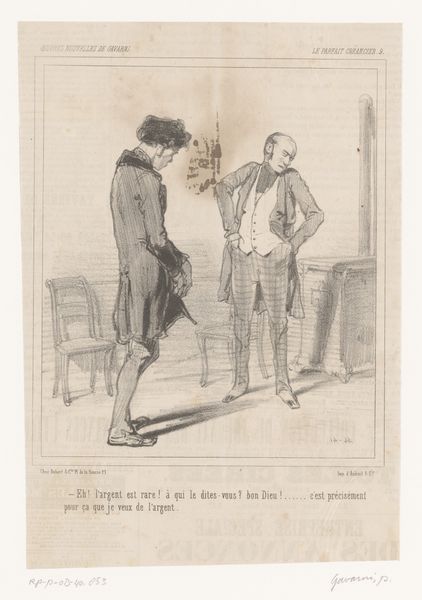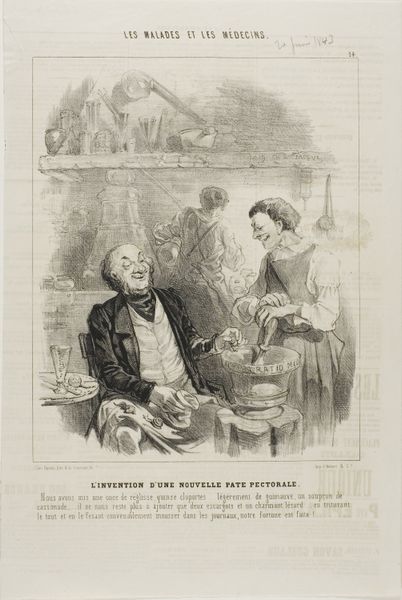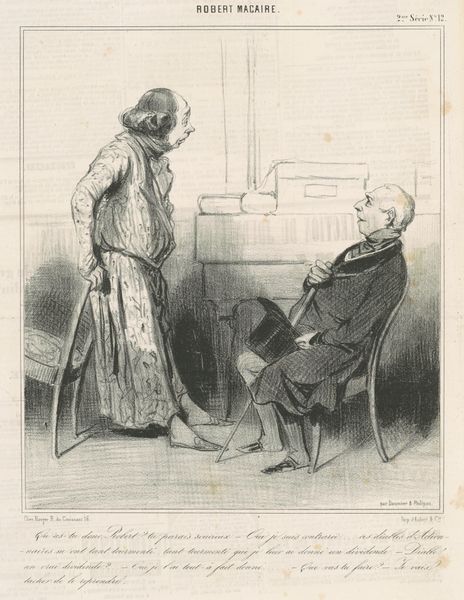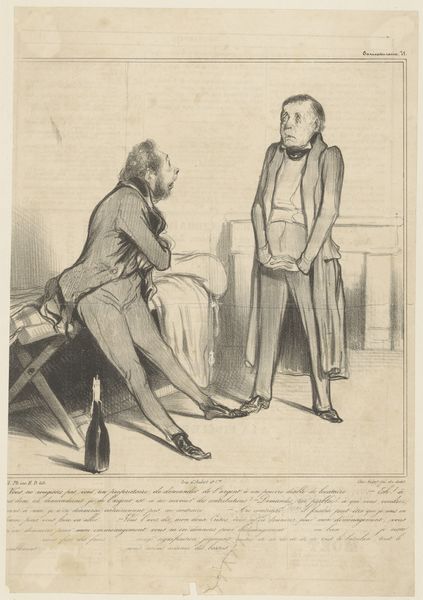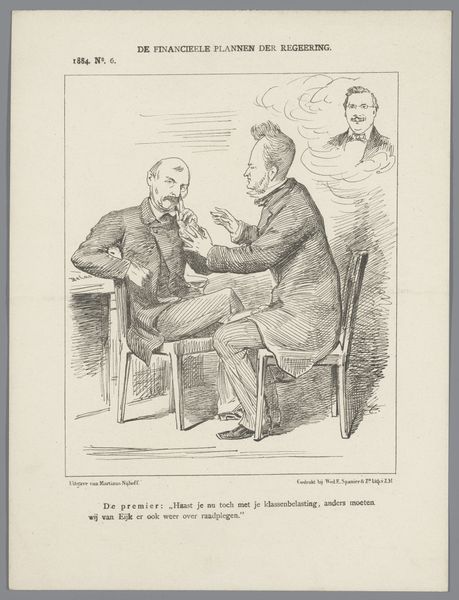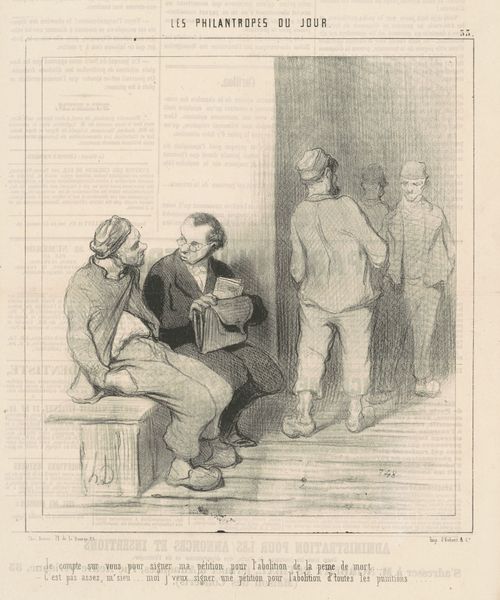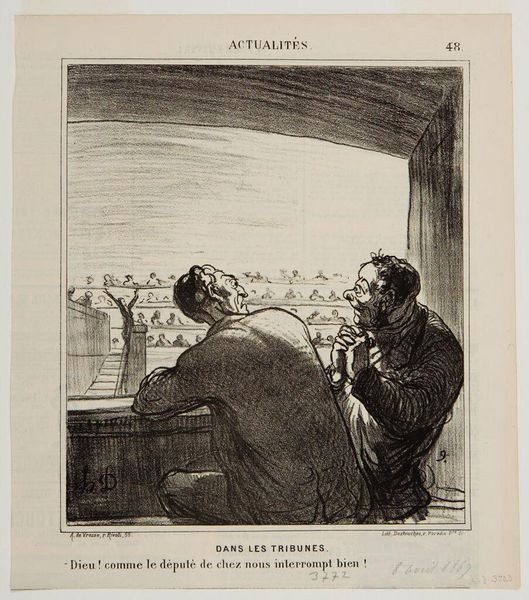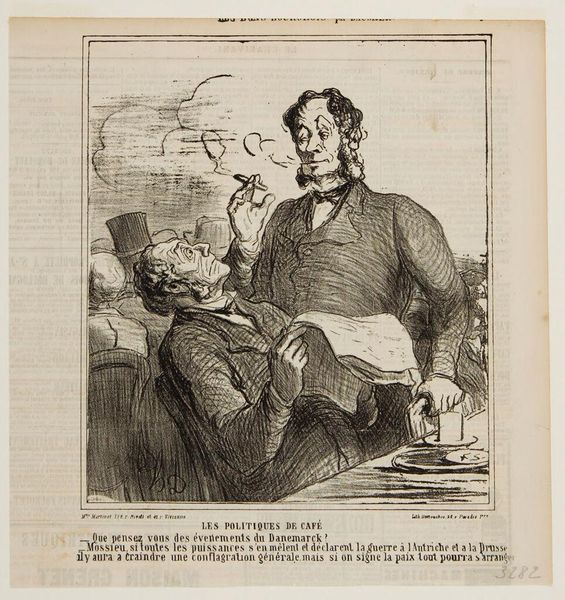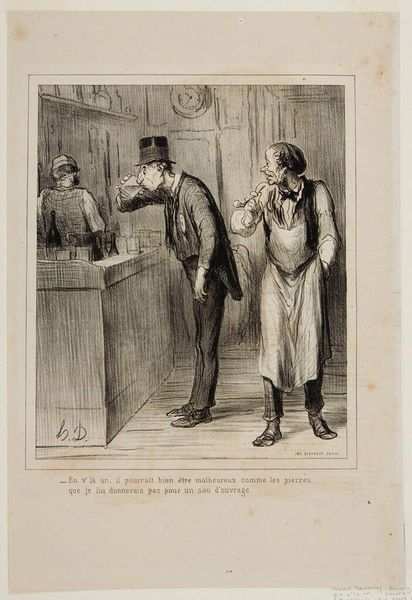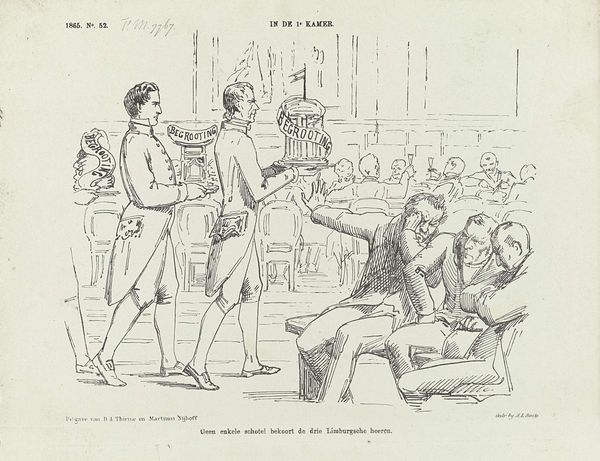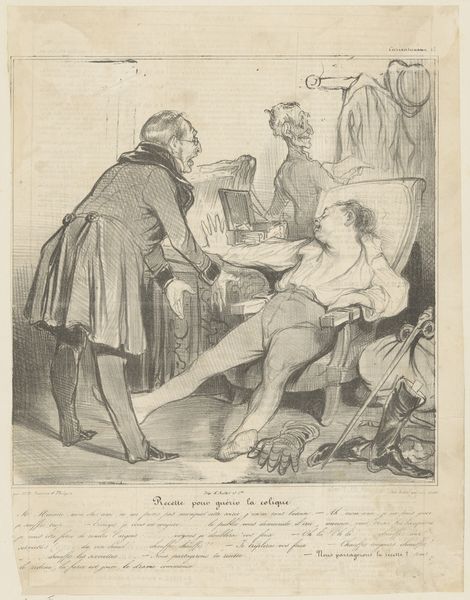
drawing, lithograph, print, paper, pen
#
drawing
#
lithograph
# print
#
caricature
#
paper
#
france
#
pen
#
genre-painting
Dimensions: 230 × 188 mm (image); 351 × 235 mm (sheet)
Copyright: Public Domain
Editor: Here we have Charles Jacque's lithograph from 1843, titled "The Homeopaths: First Treatment." I find the linework so expressive, especially in capturing the men’s gestures. It seems like a scene ripe with implied narrative. What stands out to you in this print? Curator: From a formalist perspective, I am drawn to the dynamic interplay of light and shadow. The stark contrast delineates form and directs the viewer’s gaze. Observe how Jacque masterfully employs hatching and cross-hatching to sculpt the figures, imbuing them with a sense of volume despite the print's inherent two-dimensionality. Editor: I notice that contrast too, particularly between the stark white face of the patient and the shadowed face of the doctor, is that intentional? Curator: It could be argued so. How else would we draw distinctions without visual contrasts and counterpoints? Consider the compositional structure – a careful arrangement of vertical and diagonal lines. The rigid verticality of the chest of drawers opposes the doctor's leaning posture, which in turn counters the sitter. These oppositions create a certain visual tension. It is the visual syntax that intrigues me. What do you think the artist intended when they were creating the syntax? Editor: Interesting! So you’re focusing more on the arrangement and technique rather than what's actually being depicted? Curator: Precisely. While the caricature aspect and social commentary are evident, the formal elements constitute the very language through which those ideas are communicated. Editor: I never really considered that an artwork is language in and of itself. Curator: Indeed, art operates as a distinct mode of communication, structured by its own internal logic and principles. Recognizing this allows us a far richer aesthetic experience. Editor: That’s a great insight. Thanks for sharing your expertise!
Comments
No comments
Be the first to comment and join the conversation on the ultimate creative platform.
